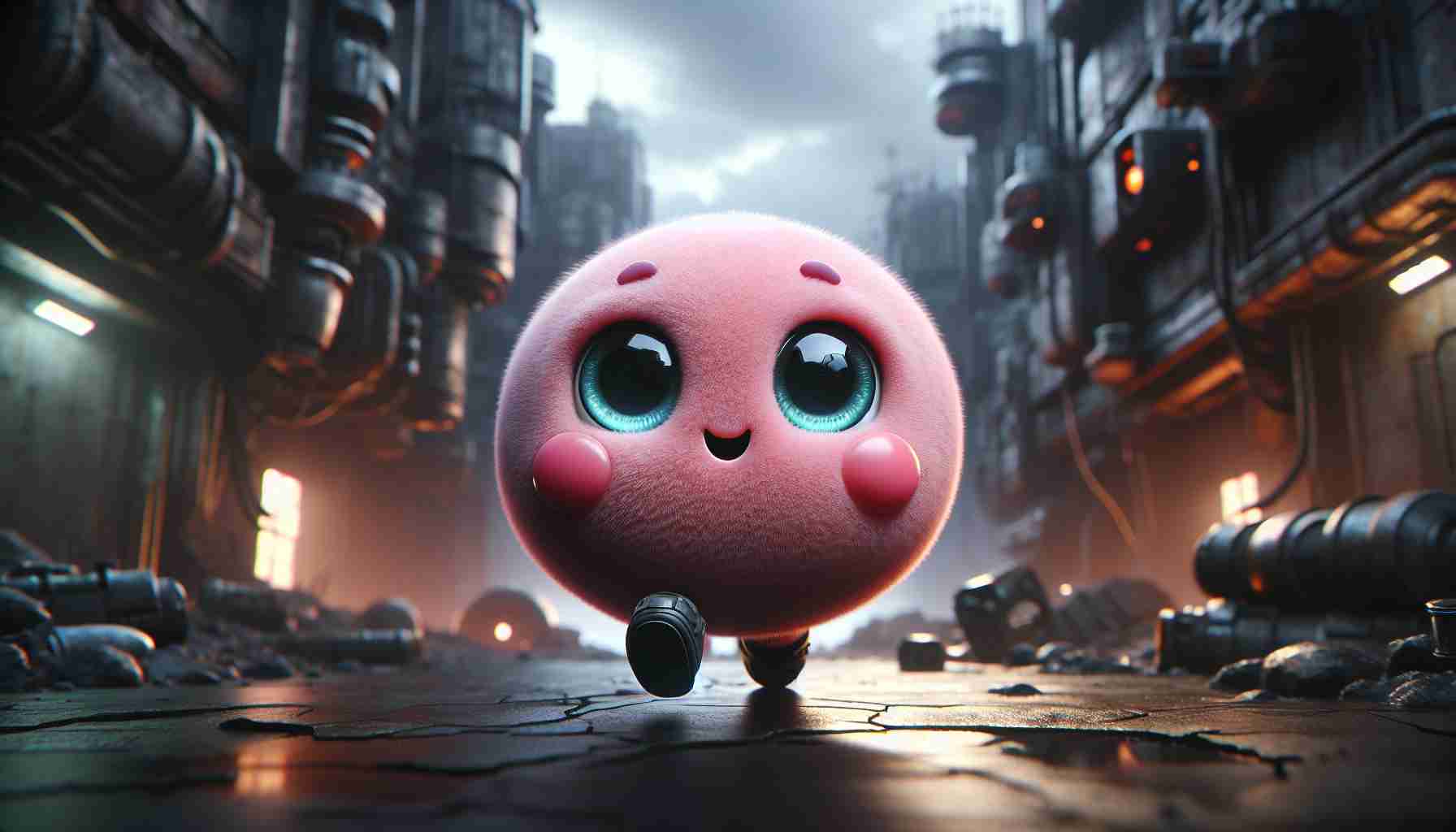Kirby’s latest adventure takes a bold step away from its traditional whimsical landscapes, plunging players into a remarkably different setting. In Kirby and the Forgotten Land, our beloved pink hero navigates through a mysterious, urban environment that mirrors a world in decline. This stark contrast to the usual vibrant and idyllic realms creates an intriguing backdrop filled with crumbling infrastructures and abandoned locales that echo a sense of nostalgia and unease.
The gameplay retains the essence that fans have come to adore, presenting classic platforming elements complemented by fresh challenges. Kirby’s ability to float over obstacles remains intact, but players will encounter a host of new challenges that enhance the difficulty of navigating through derelict structures and eerie locations. One of the standout features is Kirby’s versatile copy abilities, with the Ranger ability offering a quirky twist as he wields a comically large blunderbuss, allowing for engaging combat dynamics.
This title is a compelling choice for those who enjoy traversing unsettling yet captivating environments. Whether you’re a long-time Kirby enthusiast, intrigued by the allure of abandoned spaces, or simply in search of an enjoyable and family-friendly video game, Kirby and the Forgotten Land presents a delightful adventure that mesmerizes and invites exploration.
Release Date: March 25, 2022
Genre: Atmospheric 3D platformer
Developer: HAL Laboratory
The Enigmatic Adventure of Kirby in a Dystopian World: A New Perspective
In recent years, video games have increasingly explored themes of dystopia and decay, and Kirby and the Forgotten Land takes this trend to an unexpected level with our beloved character. This article dives deeper into the implications of Kirby’s new adventure, addressing pivotal questions, associated challenges, and the advantages and disadvantages inherent to this bold narrative choice.
What Makes the Dystopian Setting Significant?
The emergence of a dystopian environment in a franchise traditionally known for its light-heartedness raises questions about narrative depth and emotional engagement. The world of Kirby, often characterized by its cheerful aesthetics, is juxtaposed against a backdrop that forces players to confront themes of loss, environmental decay, and the passage of time. This shift encourages players to ponder over what has happened to this forgotten land and invites them to piece together a narrative obscured by silence.
Key Challenges of Implementing a Dystopian Theme
1. Emotional Disconnect: One challenge of setting a platformer in a dystopian world is the potential for emotional disconnect if the tone does not resonate with players. Balancing Kirby’s bite-sized, playful nature with the darker undertones of his environment can be tricky.
2. Gameplay Dynamics: Introducing serious themes may risk overshadowing the platforming mechanics that make Kirby games appealing. Ensuring that humor and light-hearted elements are interwoven with the narrative is crucial to maintain the series’ identity.
3. Character Development: While Kirby is known for his simplicity as a character, introducing deeper narratives necessitates richer character arcs. This may conflict with the established simplicity of his persona.
Advantages of Exploring a Dystopian Narrative
1. Depth of Storytelling: Incorporating dystopian elements allows for complex storytelling opportunities, providing players with an emotionally resonant journey. The backstory behind the desolation can add layers that engage players on a cerebral level.
2. Visual Innovation: The stark and beautiful landscapes in the game showcase the potential for innovative level designs. Environments that evoke feelings of nostalgia and a sense of loss can lead to a richer visual experience, contrasting heavily with previous games.
3. Expanding Audiences: This darker, more serious theme can attract new players who may not have previously engaged with the series. A narrative that pushes boundaries may entice older gamers looking for richness in storytelling.
Disadvantages of Adopting a Grim Setting
1. Alienating Fans: Long-time fans who cherish the whimsical nature of Kirby may find the new dystopian elements disconcerting, leading to a potential alienation from the franchise’s core values.
2. Marketing Challenges: A shift towards a more serious aesthetic could pose difficulties in marketing, as it may not align with the playful branding long associated with Kirby games.
3. Risk of Inconsistency: There exists the risk of creating tonal inconsistencies. If the game does not navigate the shift smoothly, it could confuse players about what kind of experience they are meant to expect.
Addressing Controversies
The controversial shift in tone and setting has sparked discussions in gaming communities. Players have raised concerns regarding whether Kirby can effectively transition from carefree adventures to a world filled with eerie remnants and post-apocalyptic themes. Resolving these conversations involves a transparent discussion about the creative choices made by developers and how they retain the essence of Kirby while exploring new territory.
Conclusion
In conclusion, Kirby and the Forgotten Land stands out as a compelling entry that diverges from traditional narratives, presenting both challenges and opportunities. By moving into a dystopian realm, Hal Laboratory has opened the door to new artistic expressions while inviting players to engage with Kirby’s world in a thought-provoking manner. The balance of nostalgia and innovative gameplay remains essential as this iconic character embarks on a new journey.
For more insights into the world of Kirby and the evolution of video game narratives, visit Nintendo’s official site.











